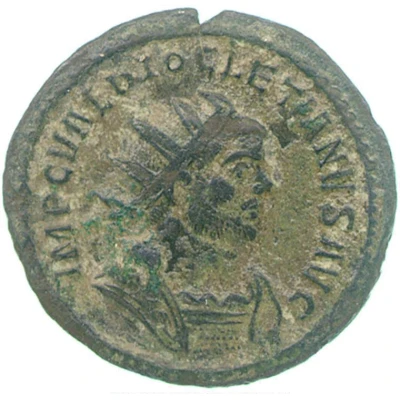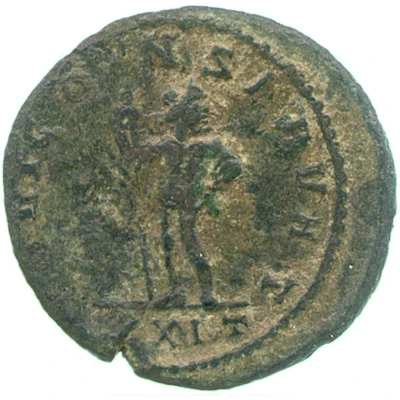Antoninianus - Diocletianus FELICITAS PVBLIC; Felicitas
| Silver | - | - |
| Issuer | Rome › Roman Empire (27 BC - 395 AD) |
|---|---|
| Emperor | Diocletian (Gaius Aurelius Valerius Diocletianus) (284-305) Maximian Herculius (Marcus Aurelius Valerius Maximianus) (286-305) |
| Type | Standard circulation coin |
| Years | 290-293 |
| Value | Antoninianus (1) |
| Currency | Antoninianus, Reform of Caracalla (AD 215 – 301) |
| Composition | Silver |
| Shape | Round (irregular) |
| Technique | Hammered |
| Demonetized | Yes |
| Updated | 2024-10-05 |
| Numista | N#305589 |
|---|---|
| Rarity index | 100% |
Reverse
Felicitas, draped, standing left, leaning on column with right arm and holding caduceus in left hand, crossing legs.
Script: Latin
Lettering:
FELICITAS PVBLIC
-/-//S
Translation:
Felicitas Publica.
Good fortune of the public.
Comment
Source:Online Coins of the Roman Empire (OCRE)
Interesting fact
One interesting fact about the Antoninianus - Diocletianus (FELICITAS PVBLIC; Felicitas) coin is that it was issued during a time of significant economic and political change in the Roman Empire. The coin was minted during the reign of Diocletian, who introduced a number of economic reforms in an attempt to stabilize the empire's economy and address issues such as inflation and debasement of the currency. The coin's design, featuring the goddess Felicitas, was meant to symbolize the idea of good fortune and prosperity, which was a key aspect of Diocletian's reforms. Despite these efforts, the Roman Empire continued to face challenges and ultimately declined in the centuries that followed.

